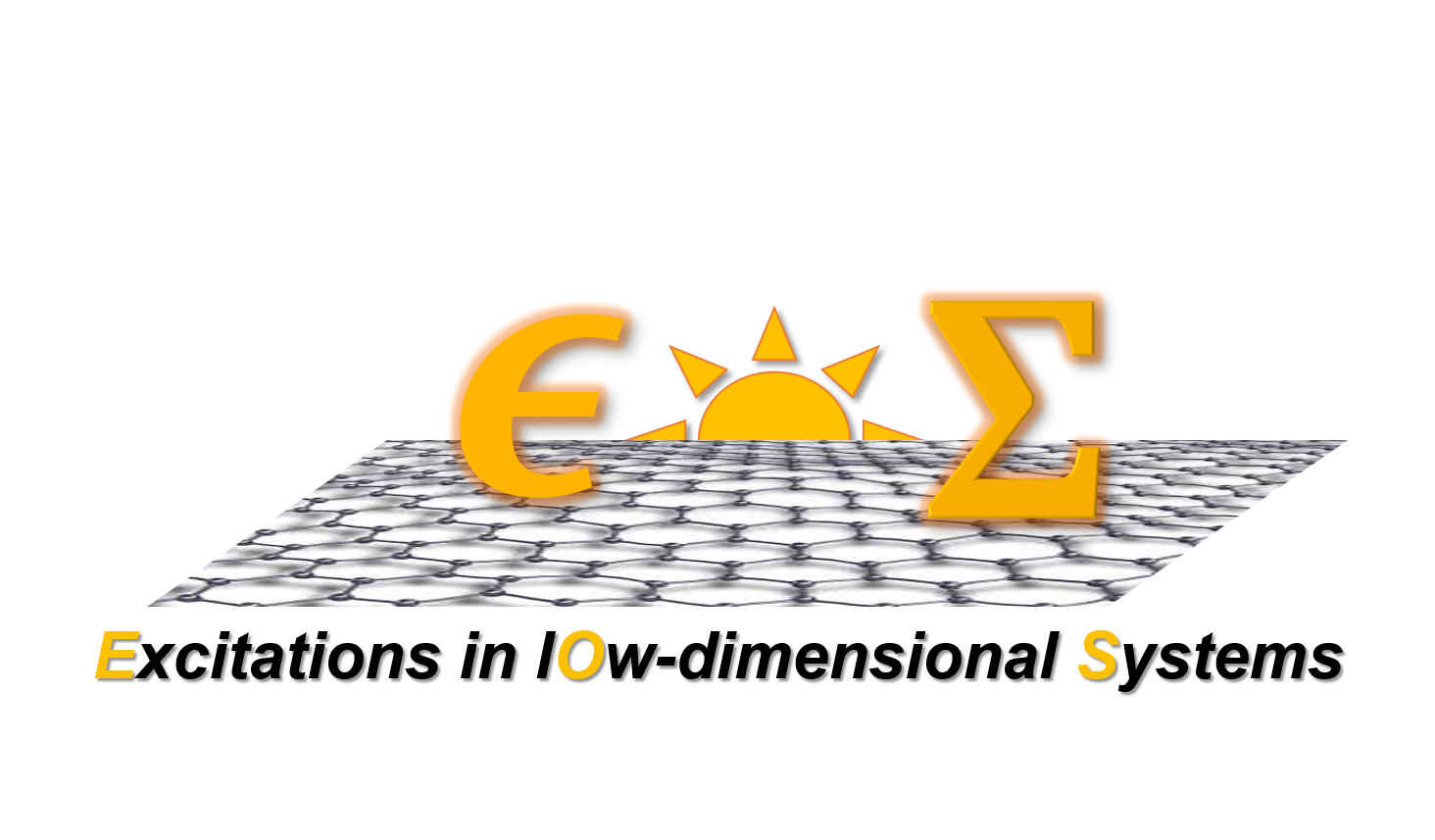Research
Research Topics
We study light-matter interaction in different types materials from first principles. Below a list of our main research topics.
Linear and nonlinear optical properties from real-time time-dependent DFT
We study the interaction between light-absorbing materials and radiation sources, including intense laser beams, from real-time time-dependent DFT (RT-TDDFT). The time-propagation of the Kohn-Sham equations not only provides an efficient method for calculating optical spectra but also allows one to follow "real-time" the evolution of the excited states. This approach can be extende employed to calculate the response of the systems to intense fields. For instance, we applied the impulsive excitation scheme inroduced by Yabana and Bertsch to simulate a broadband laser beam of given intensity. In this way we could describe from optical limiting in a prototypical macrocyclic molecule. Further applications and extensions of this approach are being carried out.
Main collaborators:
- Dr. Carlo Andrea Rozzi and Dr. Stefano Pittalis (CNR - Nanoscience Institute, Modena, Italy)
Relevant publications:
- C. Cocchi, D. Prezzi, A. Ruini, E. Molinari, and C. A. Rozzi, Phys. Rev. Lett. 112, 198303 (2014).
Electronic and optical properties of (doped) organic semiconductors
We study light-matter interaction in organic semiconductors to understand the interplay between their structure and their electronic and optical properties. One of our main goals is unveiling the fundamental mechanisms of doping in these materials.
Main collaborators:
- Prof. Norbert Koch and PD Dr. Andreas Opitz (HU Berlin)
- Prof. Dieter Neher (University of Potsdam, Germany)
- Prof. Gregor Witte (University of Marburg, Germany)
- Prof. Stefano Corni (University of Padova, Italy)
Relevant publications:
- P. Beyer, D. Pham, C. Peter, N. Koch, E. Meister, W. Brütting, L. Grubert, S. Hecht, D. Nabok, C. Cocchi, C, Draxl, and A. Opitz, Chem. Mater, in press (2019)
- C. Cocchi, T. Breuer, G. Witte, and C. Draxl, Phys. Chem. Chem. Phys. 20, 29724 (2018)
- C. Cocchi and C. Draxl, J. Phys.: Condens. Matter 29, 394005 (2017)
Charge-carrier dynamics in laser-excited hybrid interfaces
We investigate the fundamental mechanisms leading to the formation of optical excitations in hybrid inorganic/organic interfaces by means of RT-TDDFT. We focus on the very early stage of formation of the excitations due to the perturbation of the materials with external electromagnetic radiation.
Main collaborators:
- Prof. Stefano Corni (University of Padova, Italy)
- Dr. Carlo Andrea Rozzi and Dr. Stefano Pittalis (CNR - Nanoscience Institute, Modena, Italy)
Relevant publications:
- O. Turkina, D. Nabok, A. Gulans, C. Cocchi, and C. Draxl, Adv. Theory Simul. 2, 1970004(2018).
Electronic structure characterization of novel materials for photocathodes
We investigate the electronic structure of novel materials for photocathode applications in collaboration with experimental partners at the the Helmholtz-Zentrum Berlin. Our first-principles characterization based on density-functional theory and many-body perturbation theory is essential to identify promising compounds for the next-generation of photocathodes for particle accelerators.
Main collaborator:
- Prof. Thorsten Kamps (HU Berlin and Helmholtz-Zentrum Berlin)
- Dr. John Smedley (Brookhaven National Lab, NY, USA)
Relevant publications:
-
C. Cocchi, S. Mistry, M. Schmeißer, J. Kühn, and T. Kamps, J. Phys.: Condens. Matter 31, 014002 (2018).
Excited-state properties of two-dimensional materials and heterostructures
We investigate electronic and optical excitations of two-dimensional materials and their heterostructures based on density-functional theory and many-body perturbation theory. We are particularly interested in the behavior of these materials when interact with light. Among our systems of interest there are graphene, hexagonal boron nitride (hBN), transition-metal dichalchogenides (TMDCs), and more.
Main collaborators:
- Prof. Claudia Draxl, Dr. Saeideh Edalati-Boostan, and Dr. Wahib Aggoune (HU Berlin)
- Prof. Mohamed-Akli Belkhir and Dr. Karim Rezouali (University of Bejaia, Algeria).
- Dr. Arrigo Calzolari (CNR Istituto Nanoscienze, Modena, Italy).
- Dr. Marcelo Lopes (Paul-Drude Institute Berlin)
Relevant publications:
- W. Aggoune, C. Cocchi, D. Nabok, K. Rezouali, M. A. Belkhir, and C. Draxl, Phys. Rev. B (R) 97, 24114 (2018).
- W. Aggoune, C. Cocchi, D. Nabok, K. Rezouali, M. A. Belkhir, and C. Draxl, J. Phys. Chem. Lett. 8, 1464-1471 (2017).
Electronic-structure-characterization of metal-organic complexes
We aim at understanding the nature of chemical bond and of the electronic structure in metal-organic complexes as building blocks for metal-organic frameworks and metal-halide perovskites. Our work is in collaboration with experimental groups at the Helmholtz-Zentrum Berlin and at the Federal Institute for Materials Research and Testing (BAM).
Main collaborators:
- Dr. Eva Unger (Helmholtz-Zentrum Berlin)
- Dr. Sebastian Beyer (Chinese University of Hong Kong)
- Dr. Ana Guilherme Buzanich und Dr. Franziska Emmerling (BAM)
Relevant publications:
- C. Vorwerk, C. Hartmann, C. Cocchi, G. Sadoughi, S. Habisreutinger, R. Felix, R. Wilks, H. J. Snaith, M. Bär, and C. Draxl, J. Phys. Chem. Lett. 9, 1852 (2018).
